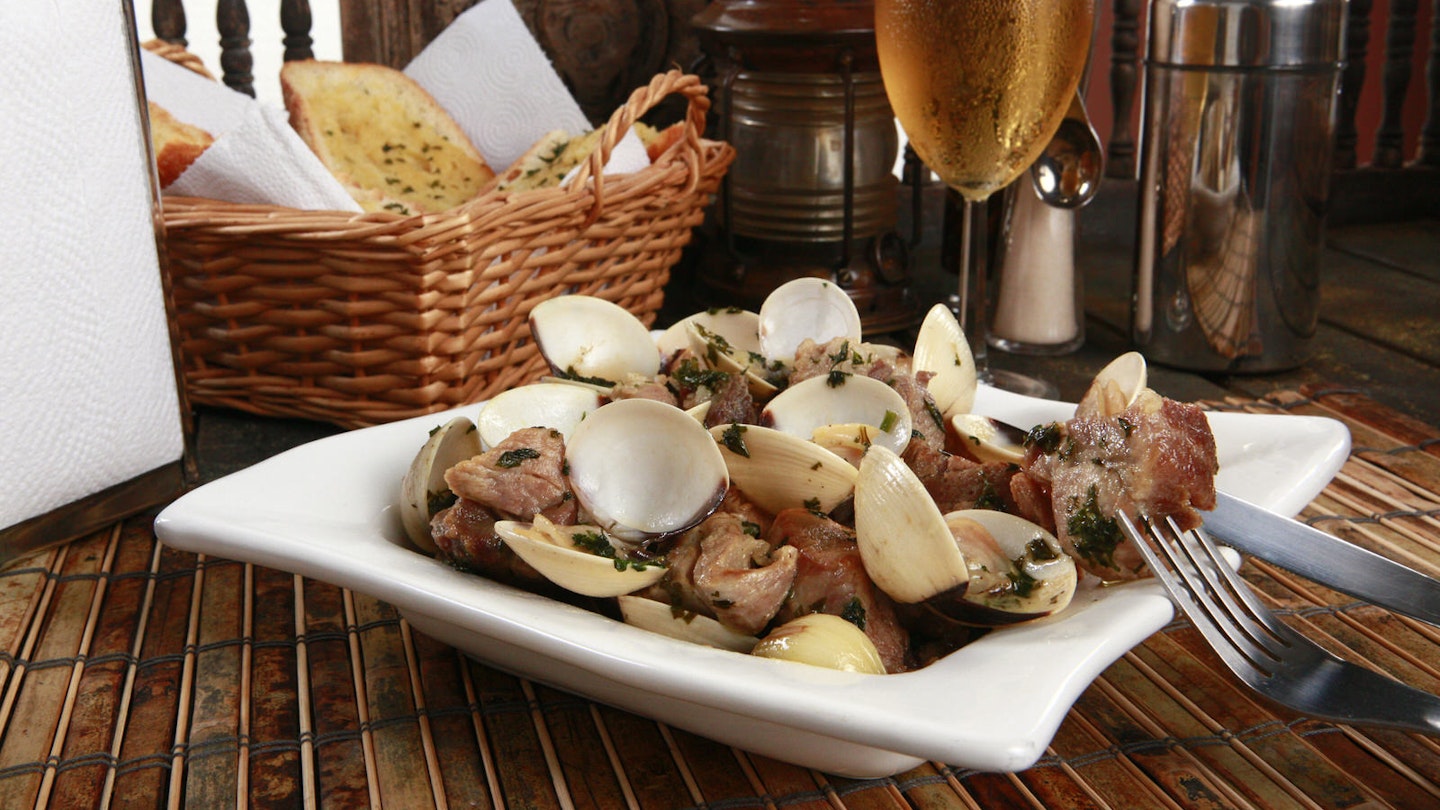Unveiling the Culinary Treasures of Alentejo
The Alentejo is one of the world’s great unsung culinary destinations. Home to scenic vineyards, olive groves, and fertile farmlands, the Alentejo is in many ways the gastronomic soul of Portugal.
The region produces half the nation’s wine and cooks up some of its most famous dishes. It also holds some of the most authentic restaurants in the country – places which celebrate age-old recipes and the deep Alentejan connection to the soil.
Culinary Treasures
The cooking of the Alentejo isn’t fussy; it’s simply a showcase of the rich ingredients from a region with centuries-old culinary traditions. Fresh-baked bread, olives, wild mushrooms, asparagus, salted cod, wild boar, and olive oil are the building blocks of timeless recipes. Pork is king here, especially porco preto (black pork), a particularly succulent meat that comes from pigs raised in the oak groves of the Alentejo and fed a diet rich in acorns. The Alentejo also produces some excellent cheeses, and it’s worth making a pilgrimage to Serpa to taste the namesake queijo de Serpa, a creamy cheese with a strong aroma made from sheep’s milk.
You’ll find plenty of inventive combinations here in dishes like carne de porco à Alentejana, a local surf and turf dish of pork and clams, often cooked in a covered copper dish. Bread also figures heavily in creative concoctions like açorda – bread soup with garlic and herbs (usually coriander) and olive oil. Another much-loved classic is migas, which is crumbled bread with olive oil, garlic, and hot water served to accompany pork.
Heavenly Desserts
Regional specialities extend beyond main courses and appetisers. Many towns and villages in the Alentejo prepare delightful pastries and desserts, including versions you won’t find elsewhere. According to tradition, nuns in convents were the first to make desserts, beginning in the 15th century. Recipes were passed down from generation to generation, kept as closely guarded secrets in each nunnery. Today some of the best pastries are still made by nuns – and known far and wide as doces conventuais (convent sweets).
In Évora, you can get a taste of spiritual perfection at the Pastelaria Conventual Pão de Rala. This classic tile-covered patisserie serves up many sinful temptations, including the signature pão de rala, an almond cake made with egg yolk and lemon zest.
You won’t have to travel far in the Alentejo to find sericaia, a kind of egg custard with sugar plums and cinnamon. Though it enjoys region-wide popularity, the dish is the pride and joy of the town Elvas, where it originated, and it’s still one of the best places in Portugal to enjoy it.
Meanwhile, Portalegre deserves special mention for its pastry-loving citizens – and the monastic orders that continue to produce the goods. Every spring, the town hosts the annual Convent Sweet Fair (facebook.com/feiradocariaconventualportalegre), which offers the chance to gorge on decadent treats over three days in late March.
Wine Journeys
Like Portuguese cuisine, the wines of the Alentejo remain little-known outside the country. This makes your journey around these parts all the more rewarding. You’ll find some exceptional wines here, with a mix of bold, full-bodied reds, and smooth, well-balanced white wines spread across eight demarcated regions.
A good place to start the journey is in Évora at the info centre and wine shop of the Rota dos Vinhos do Alentejo (Wine route of the Alentejo). Here you can sample a variety of wines and pick up maps about nearby vineyards open for tastings.
If time is limited, make your way to Herdade do Esporão. Located just south of the small village of Reguengos de Monsaraz, this venerable winery produces over 40 grape varieties, grown using organic methods across its 700 hectares. Stop in for a tasting or a vineyard tour, or better yet, enjoy a meal at the restaurant. Chef Pedro Pena Bastos showcases seasonal cuisine made of ingredients sourced from local producers. Dishes like Alentejo lamb with ewe’s milk curd and Brussels sprouts pair nicely with a dense, well-structured bottle of Esporão Reserve. Of course, when dining here, a wine flight is the way to go.
Destination Dining
Eating in the Alentejo isn’t just about enjoying great food and wine; it’s also about the setting. If you’re willing to get a bit off the beaten path, you’ll find some enchanting destinations: small family-run eateries tucked down narrow lanes in medieval villages, stone-walled dining rooms perched on misty mountaintops, and cozy taverns where locals banter over plates of bacalhau (codfish) while wine is poured straight from the cask.
High up in the citadel-village of Monsaraz, the kind-hearted Dona Isabel has earned quite a local following for her infectious sense of humour and the brilliant cooking at her rustic clifftop dining room, the Sabores de Monsaraz. Each dish features only the highest quality ingredients and is made with painstaking care. Hearty plates of bacalhau dourado (codfish with egg and potato) are perennially popular and best followed by a slice of sericaia (egg custard with sugar plums) for dessert.
Hidden in the mazelike alleys of Évora’s Mouraria district, the small nine-seat Botequim da Mouraria provides an intimate dining experience courtesy of the husband-and-wife team running the show. The effusive Senhor Domingos plays host and sommelier, welcoming guests, topping up wines and making dining suggestions for the menu, which changes each day. His wife Florbela remains behind the scenes, cooking up magnificent plates of porco preto and other Alentejan delicacies.
The Alentejo has only a small stretch of coastline, but it’s a beauty. Picture pretty beaches, clifftop promenades, and, most importantly, delectable seafood. Vila Nova de Milfontes has all of the above, including a much-celebrated restaurant called Tasca do Celso. This atmospheric haunt—with a vast wine cellar and a roaring fire in the hearth—serves up excellent Alentejan specialities, including the best seafood for miles around.





